Moving Target Indication for Dual-Channel Circular SAR/GMTI Systems
Abstract
:1. Introduction
2. Dual-Channel CSAR/GMTI Imaging Geometry
3. CSAR GMTI Method
3.1. Channel Registration
- (1)
- Estimating the slope of the interferometric phase in the diagram: The varying phase curve with respect to the Doppler frequency in each range bin is extracted. Then, the slope of each curve is estimated by using curve fitting. According to Equation (9), the slope in different bins is identical. Thus, the mean value of the estimates is considered to be the real slope in the entire diagram.
- (2)
- Measuring the phase shift in each range bin: The zero Doppler point on the abscissa of the interferometric phase diagram taken to be a reference point. Then, the distance from the reference point to the intersection point where the phase curve cuts the Doppler axis is measured. The measured value is the phase shift of the range bin.
3.2. Channel Equalization
3.3. Weighted DPCA Clutter Suppression
4. Experimental Results and Discussions
4.1. Channel Registration Results Using the Gotcha Challenge Dataset
- (1)
- Estimating the slope of the interferometric phase: As shown in Figure 3a, in the experiment, the curve fitting results of all 384 range cells were almost identical. The phase curves of the 130th, 260th, and 382nd range bins in Figure 3a are illustrated in Figure 4. As can be seen in Figure 4a, the slopes of the phase curves were identical, while their phase shifts from the zero Doppler point were different. In the interferometric phase diagram, the mean value of the slope was .
- (2)
- Extracting the phase shift of each range bin: Figure 4b presents the partially enlarged details of the phase curves. The zero Doppler point is marked as the reference point RP. D1, D2, and D3 were the phase shifts in the 130th, 260th, and 382nd range bins, respectively.
- (3)
- Phase error compensation: Figure 3b shows the interferometric phase diagram, where only the linear phase term varying over the Doppler frequency was compensated for. The residual phase difference varying over the range is clearly visible in Figure 3b. Figure 3c presents the interferometric phase diagram after multiplying by the linear phase compensation factor in Equation (11). In contrast to Figure 3b, the phase variation over the range disappeared, indicating the group-phase shift was eliminated. In addition, the correlation coefficient of the dual-channel signals increased from 0.3677 to 0.9523. The correlation coefficient is defined as , where is the covariance matrix between and . Although most phase differences between channels were compensated for, a residual phase variation over the Doppler frequency was also observed, which implies a residual phase difference.
4.2. Channel Equalization Results Using the Gotcha Challenge Dataset
4.3. Weighted MTI Clutter Suppression Results Using the Gotcha Challenge Dataset
5. Conclusions
Author Contributions
Funding
Acknowledgments
Conflicts of Interest
References
- Huang, P.H.; Liao, G.S.; Yang, Z.W. An Approach for Refocusing of Ground Moving Target Without Target Motion Parameter Estimation. IEEE Trans. Geosci. Remote Sens. 2017, 55, 336–350. [Google Scholar] [CrossRef]
- Hou, L.Y.; Lin, Y.; Hong, W. Three-dimensional Reconstruction Method Study Based on Interferometric Circular SAR. J. Radars 2016, 5, 538–547. [Google Scholar]
- Shen, W.J.; Lin, Y.; Yu, L.J.; Xue, F.T.; Hong, W. Single Channel Circular SAR Moving TargetDetection Based on Logarithm BackgroundSubtraction Algorithm. Remote Sens. 2018, 10, 742. [Google Scholar] [CrossRef] [Green Version]
- Suwa, K.; Yamamoto, K.; Tsuchida, M.; Nakamura, S.; Wakayama, T.; Hara, T. Image-Based Target Detection and Radial VelocityEstimation Methods for Multichannel SAR-GMTI. IEEE Trans. Geosci. Remote Sens. 2017, 55, 1325–1338. [Google Scholar] [CrossRef]
- Zhang, Y.H. Along Track Interferometry Synthetic Aperture Radar (ATI-SAR) Techniques for Ground Moving Target Detection; Technical Report AFRL-SN-RS-TR-2005-410; Air Force Research Laboratory: New York, NY, USA, 2006.
- Zhao, N.; Li, J.W. A weighting ATI ground slow velocity moving target detection method for airborne SAR. J. Radar 2007, 5, 189–193. [Google Scholar]
- Shi, G.T. Study on Automatic Detection of Moving Slowly Target Based on Multi-Channel SAR Interferogram. Ph.D. Thesis, University NUDT, Changsha, China, 2009. [Google Scholar]
- Poisson, J.B.; Oriot, H.M.; Tupin, F. Ground Moving Target Trajectory Reconstructionin Single-Channel Circular SAR. IEEE Trans. Geosci. Remote Sens. 2015, 53, 1976–1984. [Google Scholar] [CrossRef] [Green Version]
- Wang, C.H.; Liao, G.S.; Zhang, Q.J. First Spaceborne SAR-GMTI Experimental Resultsfor the Chinese Gaofen-3 Dual-Channel SAR Sensor. Sensors 2017, 17, 2683. [Google Scholar] [CrossRef] [PubMed] [Green Version]
- Wang, X.Y.; Gao, G.; Zhou, S.L.; Zhu, Y.Q. Performance Comparison and Assessment of Displaced Phase Center Antenna and Along-track Interferometry Techniques used in Synthetic Aperture Radar-ground Moving Target Indication. J. Appl. Remote Sens. 2014, 8, 083504. [Google Scholar] [CrossRef]
- Gao, G.; Shi, G.T. Ship Detection in Dual-Channel ATI-SAR Based on the Notch Filter. IEEE Trans. Geosci. Remote Sens. 2017, 55, 4795–4810. [Google Scholar] [CrossRef]
- Uysal, F.; Murthy, V.; Scarborough, S.M. Blind Phase Calibration for Along-Track Interferometry: Application to Gotcha Data Set. In Proceedings of the SPIE Security + Defence 2014, Baltimore, MD, USA, 5–9 May 2014. [Google Scholar]
- Wang, L.H.; An, D.X.; Wang, W.; Li, Y.L. A Clutter Suppression Method for Dual-channel Circular SAR-GMTI. In Proceedings of the 14th International Conference on Wireless Communications, Networking and Mobile Computing (WiCOM 2018), Chongqing, China, 18–20 September 2018; pp. 542–548. [Google Scholar]
- Zhang, Z.X. Research on Channel Equalization Based on DPCA for Airborne SAR/GMTI System. Ph.D. Thesis, University NUAA, Nanjing, China, 2010. [Google Scholar]
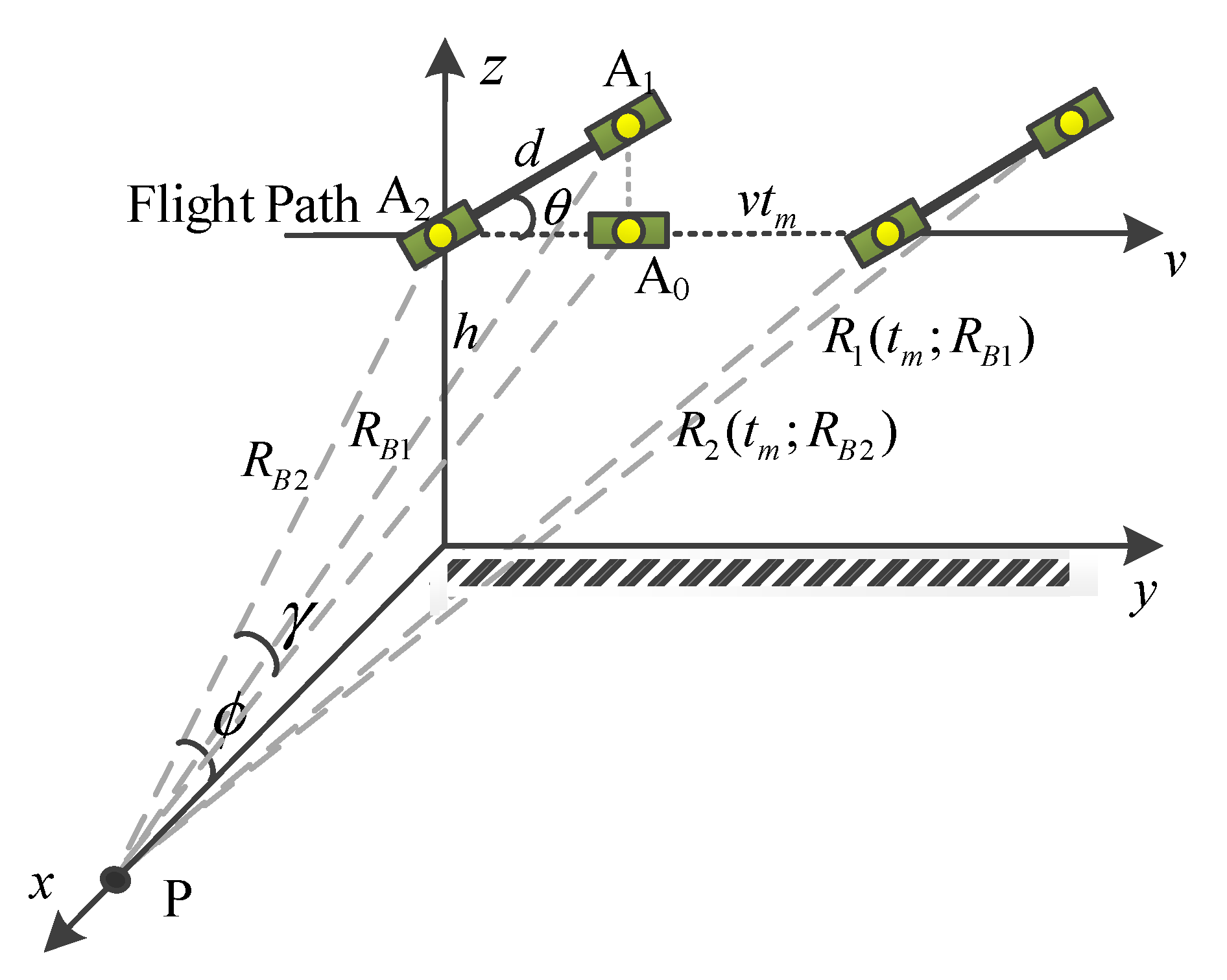
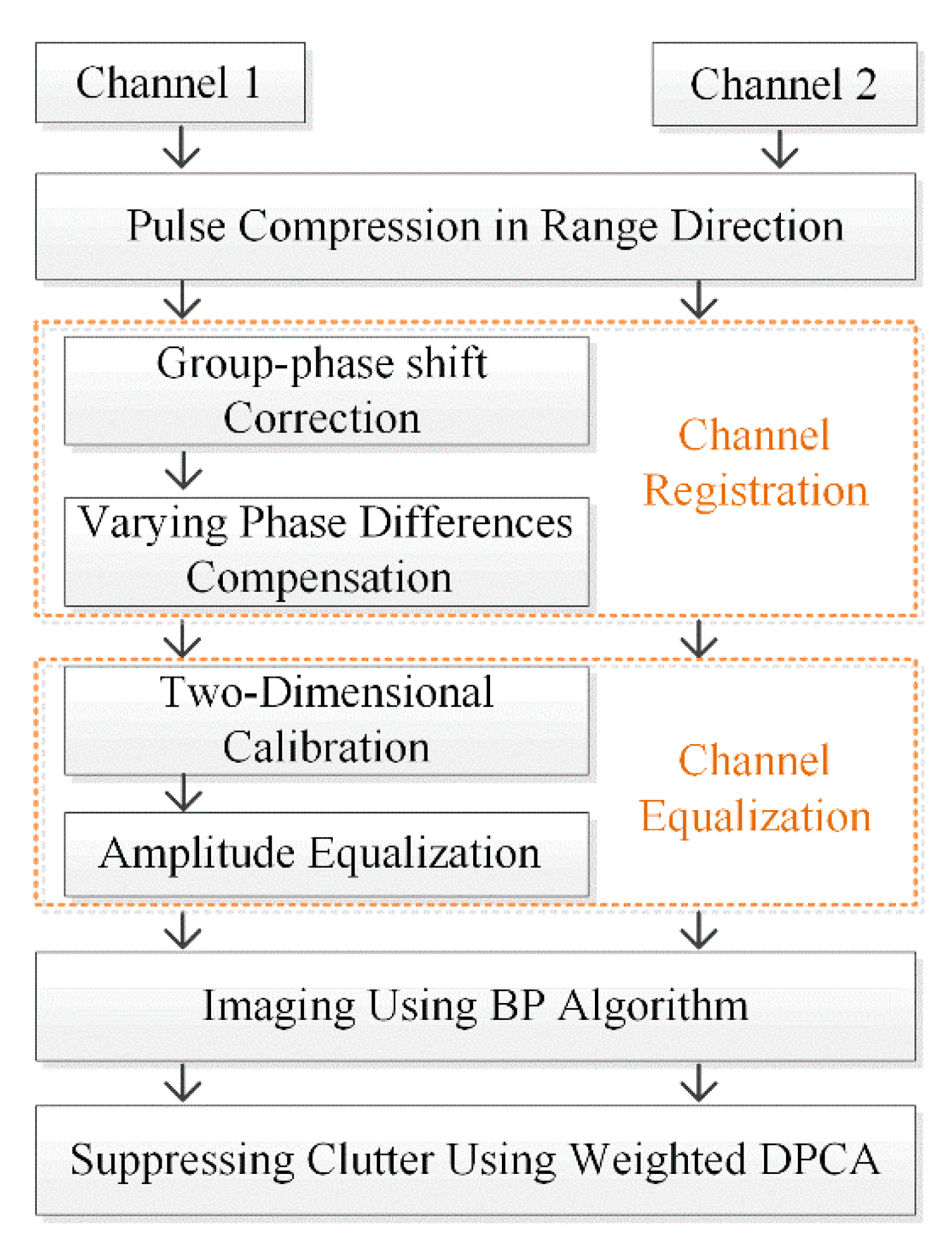
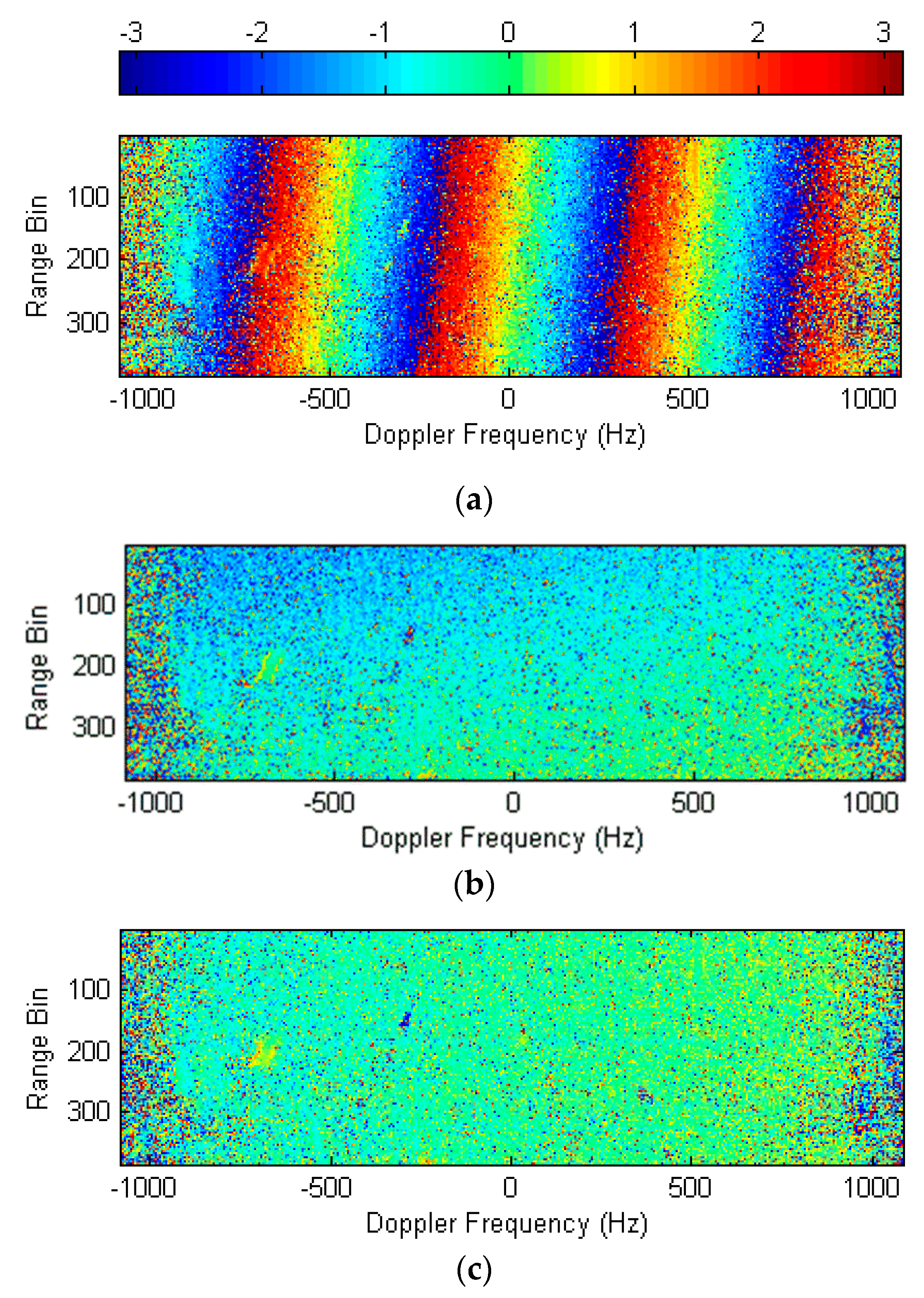

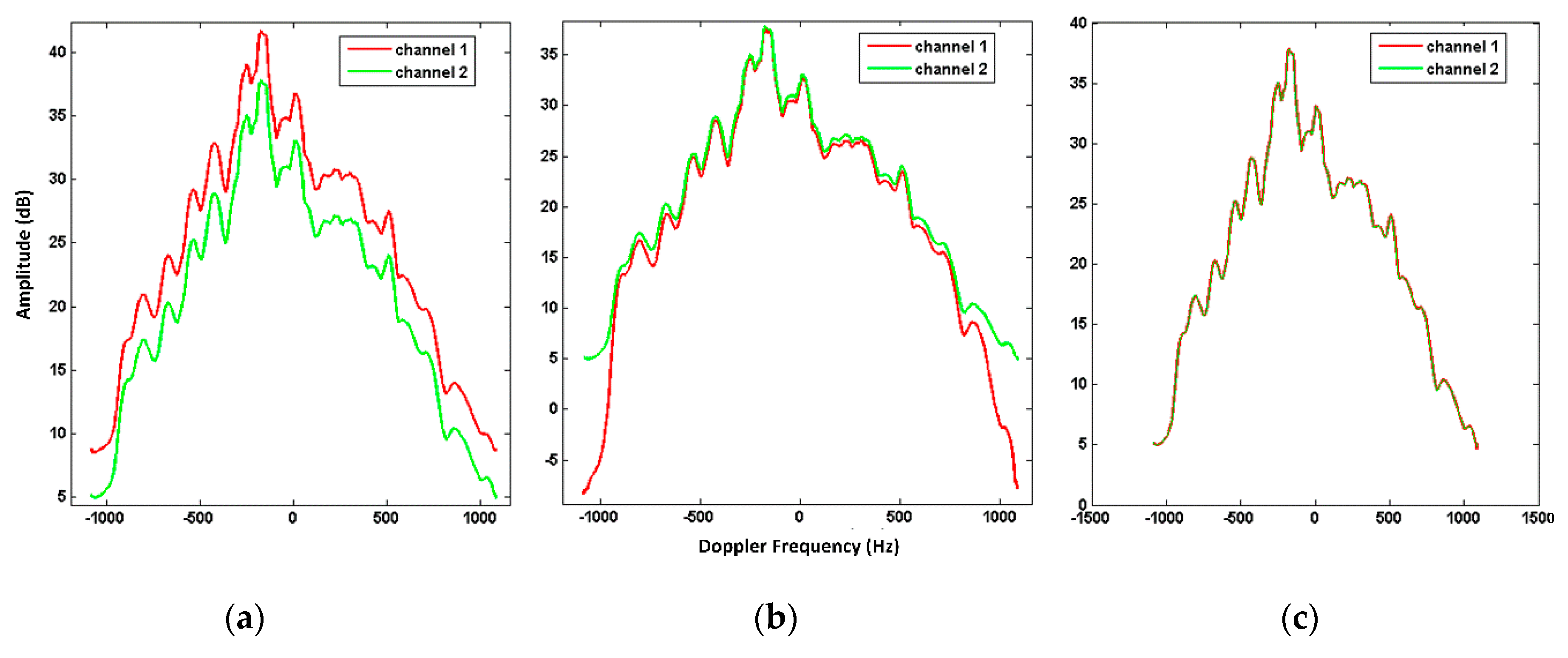
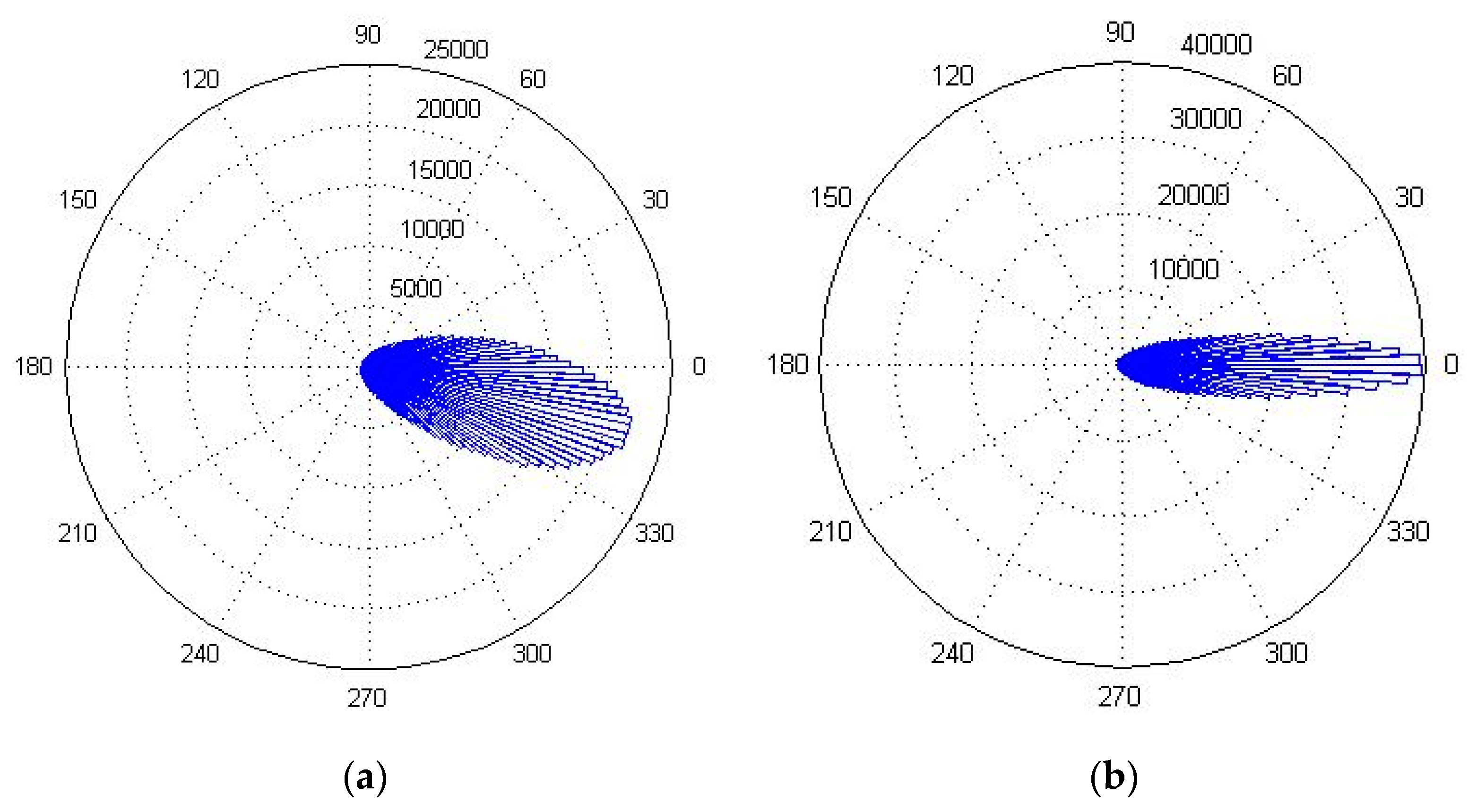
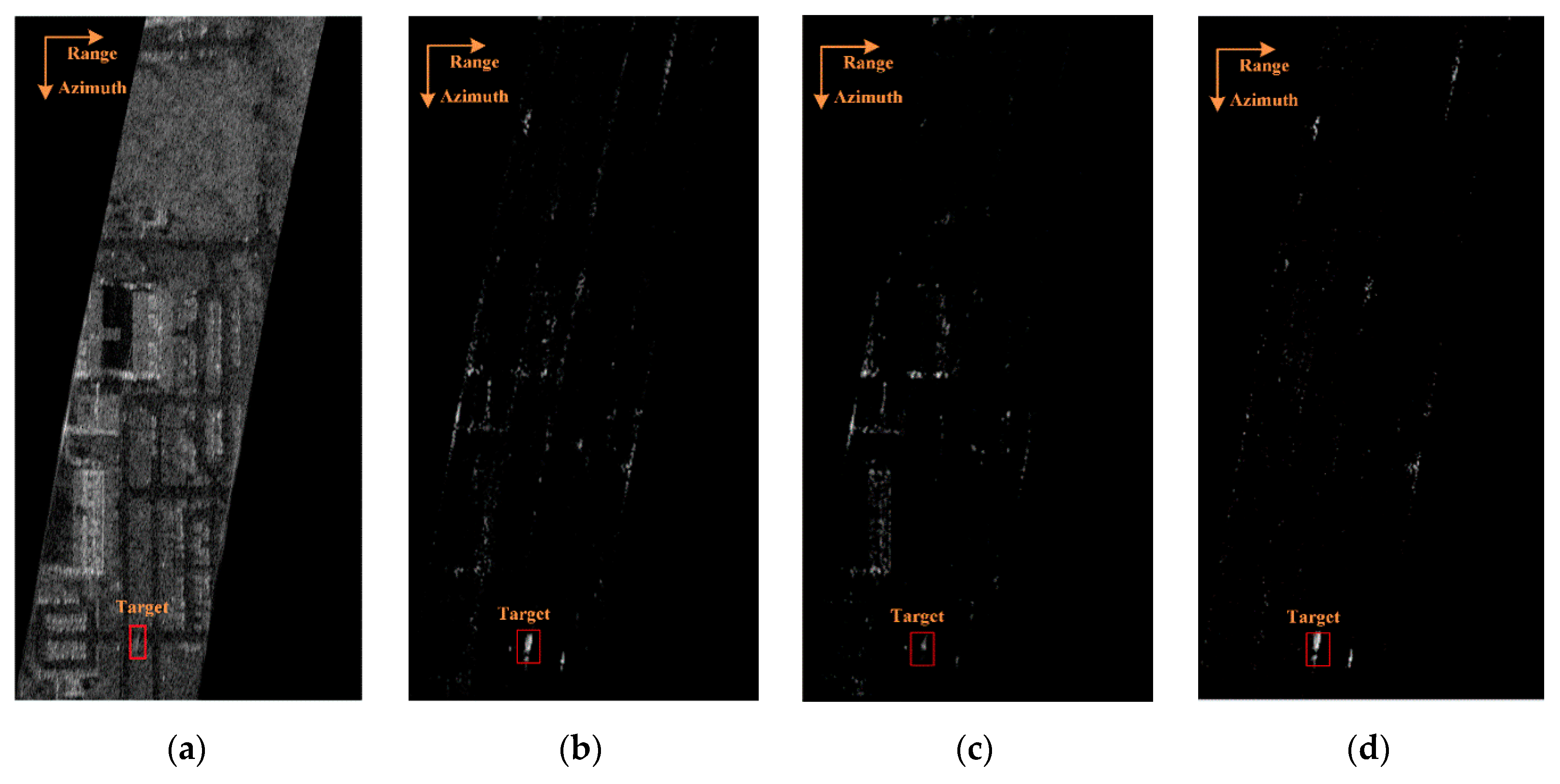
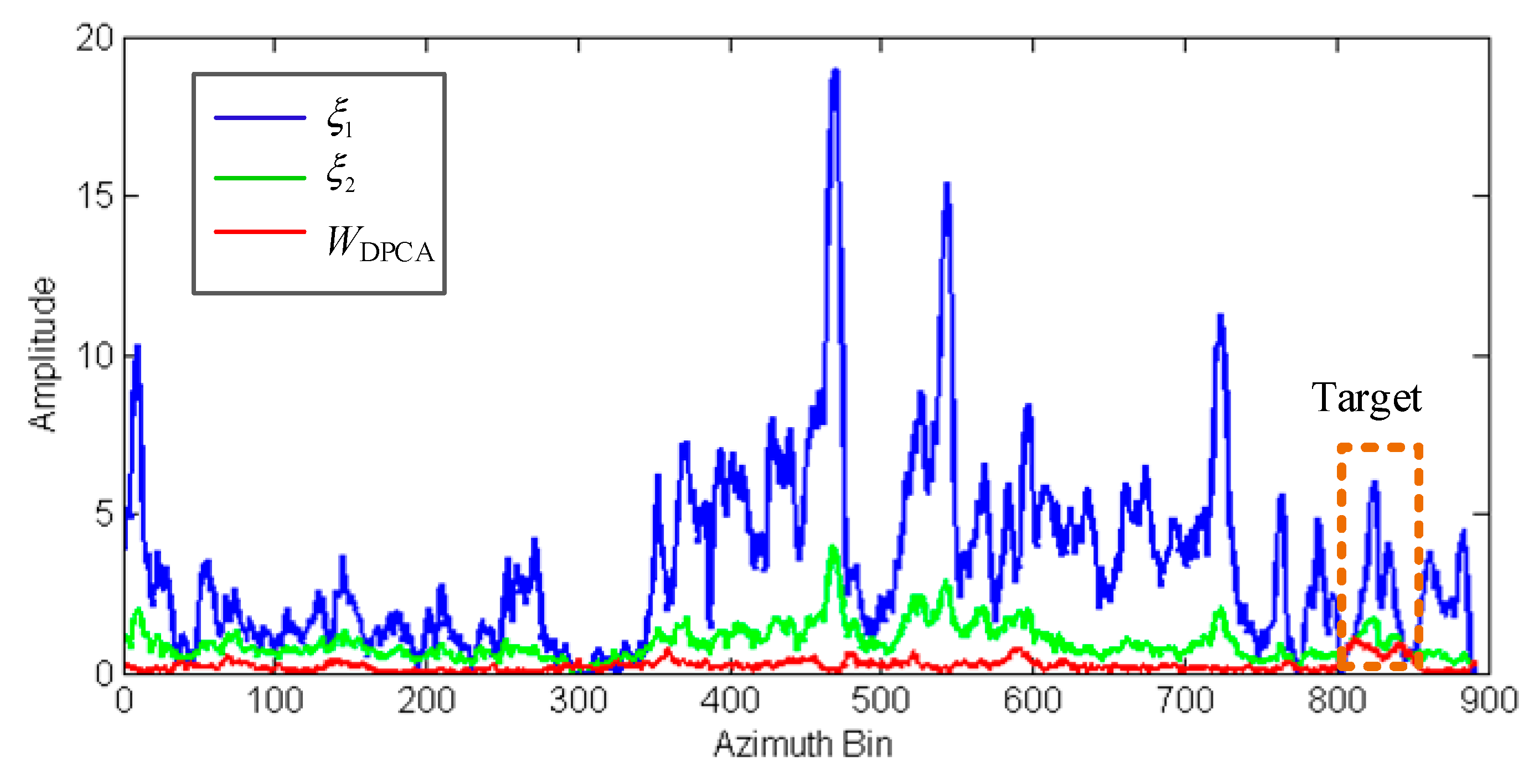
© 2019 by the authors. Licensee MDPI, Basel, Switzerland. This article is an open access article distributed under the terms and conditions of the Creative Commons Attribution (CC BY) license (http://creativecommons.org/licenses/by/4.0/).
Share and Cite
Wang, L.; Li, Y.; Wang, W.; An, D. Moving Target Indication for Dual-Channel Circular SAR/GMTI Systems. Sensors 2020, 20, 158. https://doi.org/10.3390/s20010158
Wang L, Li Y, Wang W, An D. Moving Target Indication for Dual-Channel Circular SAR/GMTI Systems. Sensors. 2020; 20(1):158. https://doi.org/10.3390/s20010158
Chicago/Turabian StyleWang, Laihe, Yueli Li, Wu Wang, and Daoxiang An. 2020. "Moving Target Indication for Dual-Channel Circular SAR/GMTI Systems" Sensors 20, no. 1: 158. https://doi.org/10.3390/s20010158




